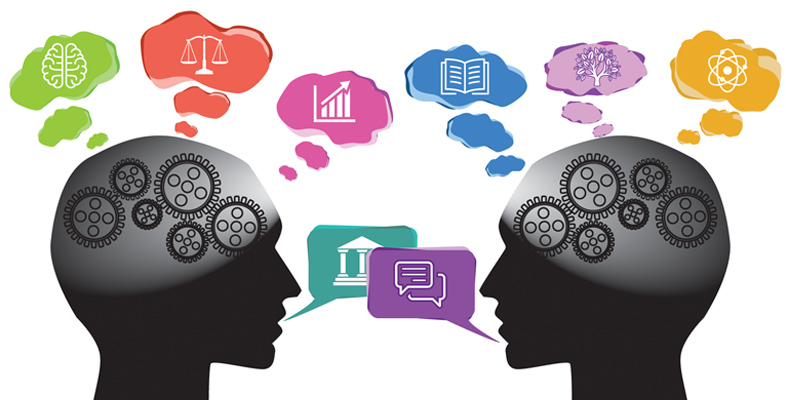2.1 The applications of contemporary science
One of the reasons this course focuses on contemporary science is because of the potential influence and impact that new knowledge can have on wider society. This can come in the form of novel challenges and opportunities.
In the case of the ESA Rosetta Mission, for example, it led to some unexpected developments when the technology initially developed by the Philae scientists was adapted by them for further use. The next activity provides more information on these developments.
Activity 2 The application of contemporary science
Study the following video: ‘How space science is making a difference on Earth’, featuring Geraint (Taff) Morgan. Taff works in the Department of Physical Sciences at The Open University. Through his research he has contributed to a number of space missions.
Transcript: Video 1 How space science is making a difference on Earth.
Now answer the following questions, before revealing the discussion below.
- What other scientific areas have developed from this space research and associated technology?
- Who might be influenced by the development of the social and economic impacts of these technologies?
Discussion
The work has led to scientists developing methods to:
- Detect prostate cancer by ‘smell’, with the potential to perform more accurate diagnoses, thereby saving lives and expenditure in the National Health Service (NHS). Patients, carers and medical professionals, in particular, could benefit from the application of these technologies.
- Analyse the air quality in submarines, acting as an additional safety measure for submariners.
- Optimising perfumes, complementing the work of humans in producing scents, complementing and enhancing the work of companies and the professionals working for them. Consumers could also benefit from the production of better quality scents.
This video shows that one of the reasons scientists and other stakeholders (citizens, medical professionals, carers, patients, consumers, military personnel, business people, etc.) care passionately about the sciences is because they have the potential to influence our lives.
To use an oft-cited cliché, ‘science matters’, which is why the work conducted by scientists and other stakeholders can be linked with politicians and other policy makers. The next (optional) activity explores these ideas further.
Optional activity: why should scientists engage with policy makers?
Study the following video: ‘Why should scientists engage with policy makers?’, featuring Ian Bateman. Ian is Professor of Environmental Economics and the Director of the Land, Environment, Economics and Policy Institute (LEEP) at the University of Exeter. As you watch, make notes on the questions that follow, before revealing the discussion below the text box.
Transcript: Video 2 Why should scientists engage with policy makers?
CAPTION: Why should scientists engage with policy?
CAPTION: What are the biggest challenges to using scientific evidence in policy making? How can scientists help to overcome this?
CAPTION: What practical steps should scientists take to engage with the policymaking process?
CAPTION: What examples have you seen of scientific evidence leading to a real policy change?
Questions:
- Why should scientists engage with policy makers?
- What are the biggest challenges to using scientific evidence in policy making?
- What practical steps should scientists take to engage with the policy making process?
- What examples does he offer to illustrate where science has influenced policy?
Discussion
Professor Bateman begins by arguing that science has the potential to change our lives. He calls on scientists to make active decisions about whether they want their research to benefit society. If they answer yes to this fundamental question, then scientists need to identify which decision makers connect with their science. This could include policy makers at an international, national, regional, and/or local level. It could also include a whole range of other stakeholders, including non-governmental organisations (NGOs), community groups, industry and members of the public.
Professor Bateman argues that one of the biggest challenges facing scientists is to understand the context that decision makers are working within. This includes multiple, and sometimes conflicting, demands on them. Decision makers rarely have the luxury of having a single, simple issue to debate at any given time, and they are routinely faced with limited resources.
In effect, decision makers have to prioritise. Scientists therefore need to communicate their science clearly and within the context of ‘real-world’ challenges. At times this may require them not to communicate, i.e. to be selective about which scientific evidence is essential to resolving a given issue. At other times, they will need to identify and present scientific evidence in shorthand. This approach can seem very different from communicating with other scientists in a research context, e.g. a laboratory, on location in the field, at academic conferences, or through research papers.
He argues that one of the most obvious ways to engage with the policy making process is to talk to decision makers. Crucially, this requires careful selection of information, packaged in a way that is equivalent to other forms of evidence that decision makers will receive.
Finally, Professor Bateman describes an example of this working in practice related to research into ecosystems. By engaging with policy makers he, working with other scientists and stakeholders, ultimately delivered a long-term, 25-year commitment to improving the environment.
